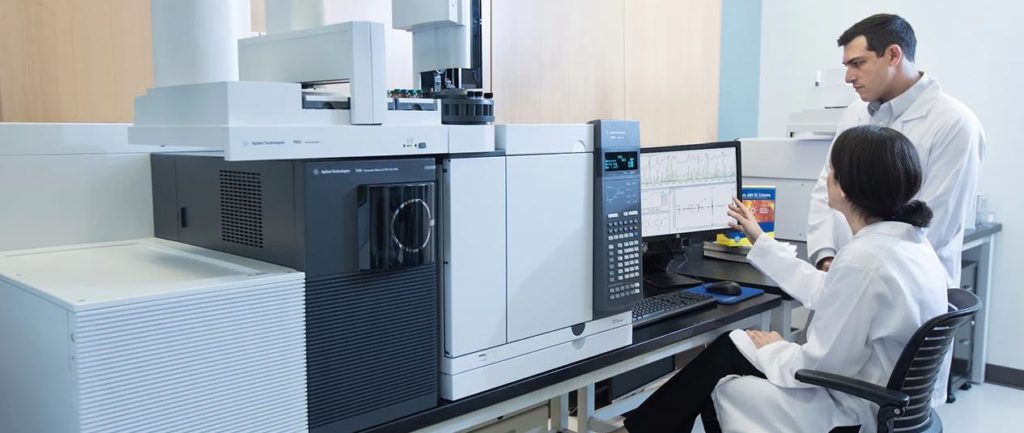
GC-MS can be used to study liquid, gaseous or solid samples. Analysis begins with the gas chromatograph, where the sample is effectively vaporized into the gas phase and separated into its various components using a capillary column coated with a stationary (liquid or solid) phase. The compounds are propelled by an inert carrier gas such as helium, hydrogen or nitrogen. As components of the mixture are separated, each compound elutes from the column at a different time based on its boiling point and polarity. The time of elution is referred to as a compound’s retention time. GC has the capacity to resolve complex mixtures or sample extracts containing hundreds of compounds.
a man writing on a whiteboard
Once the components leave the GC column, they are ionized and fragmented by the mass spectrometer using electron or chemical ionization sources. Ionized molecules and fragments are then accelerated through the instrument’s mass analyzer, which quite often is a quadrupole or ion trap. It is here that ions are separated based on their different mass-to-charge (m/z) ratios. GC-MS data acquisition can be performed in either full scan mode, to cover either a wide range of m/z ratios, or selected ion monitoring (SIM) mode, to gather data for specific masses of interest.
The final steps of the process involve ion detection and analysis, with fragmented ions appearing as a function of their m/z ratios. Peak areas, meanwhile, are proportional to the quantity of the corresponding compound. When a complex sample is separated by GC-MS, it will produce many different peaks in the gas chromatogram and each peak generates a unique mass spectrum used for compound identification. Using extensive commercially available libraries of mass spectra, unknown compounds and target analytes can be identified and quantified.
